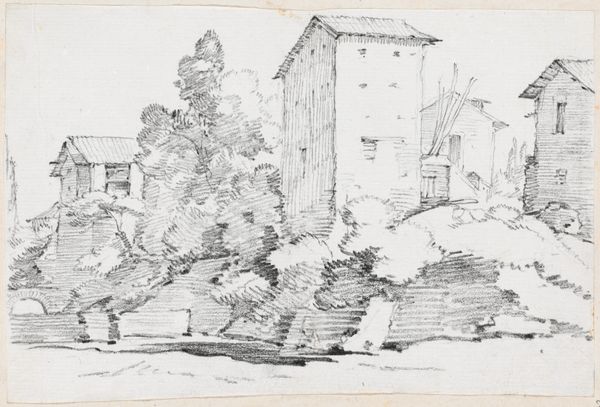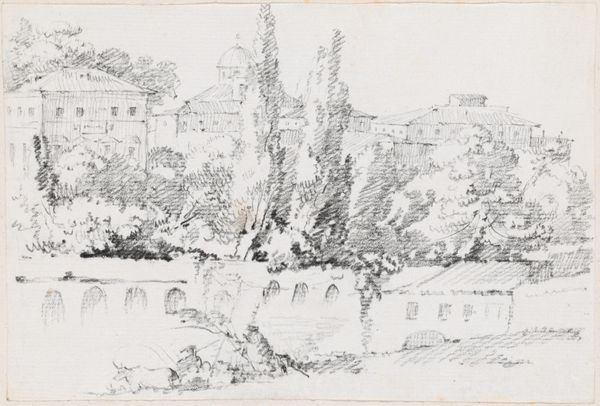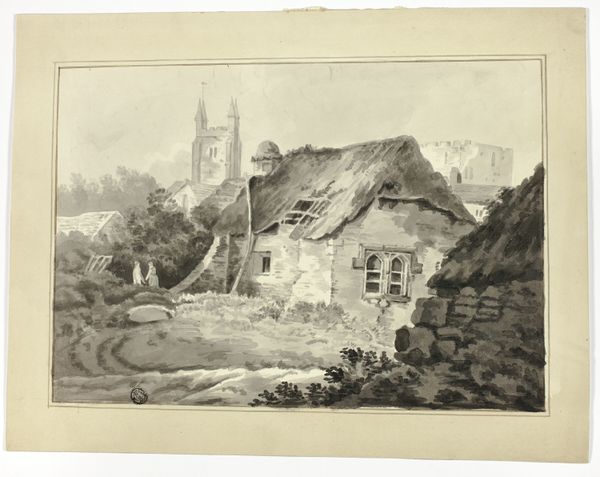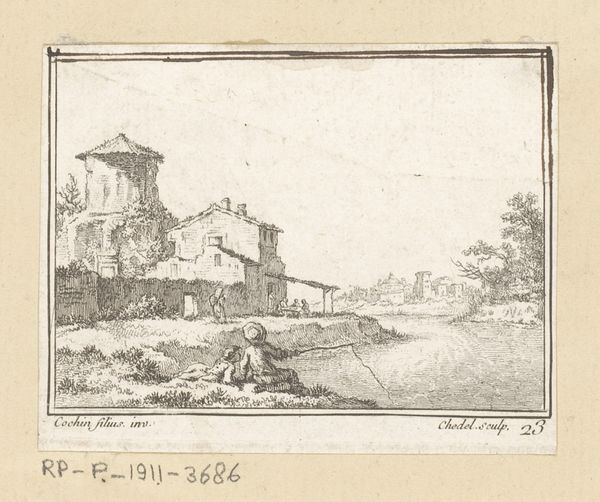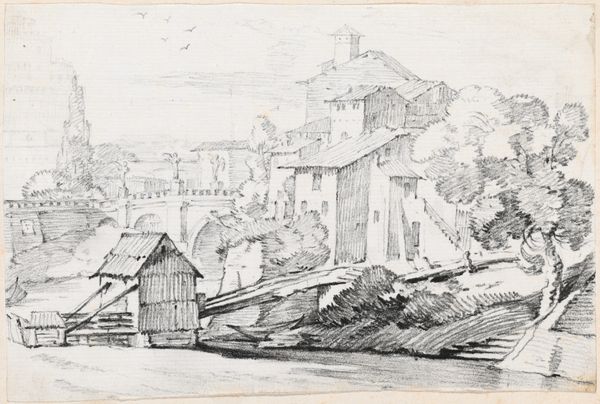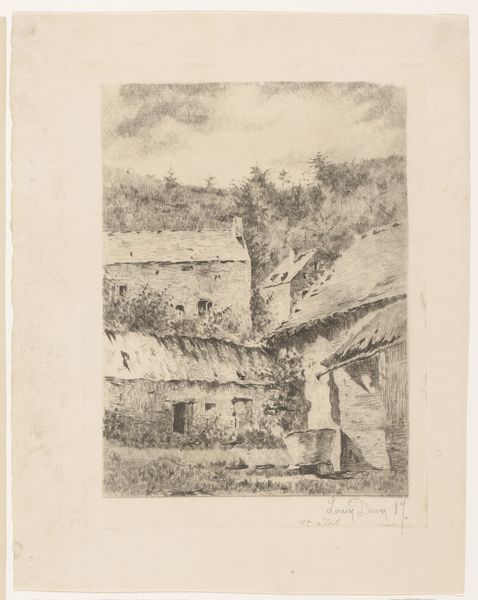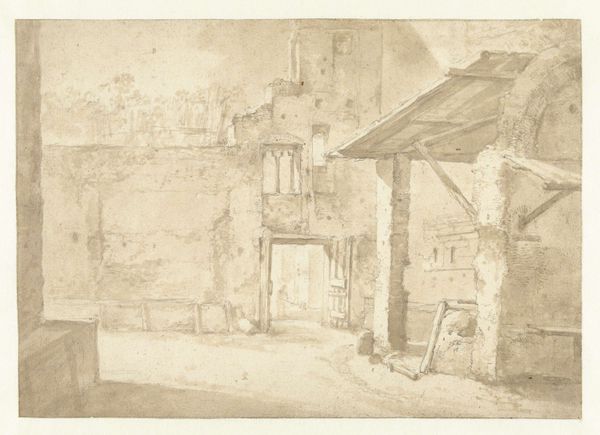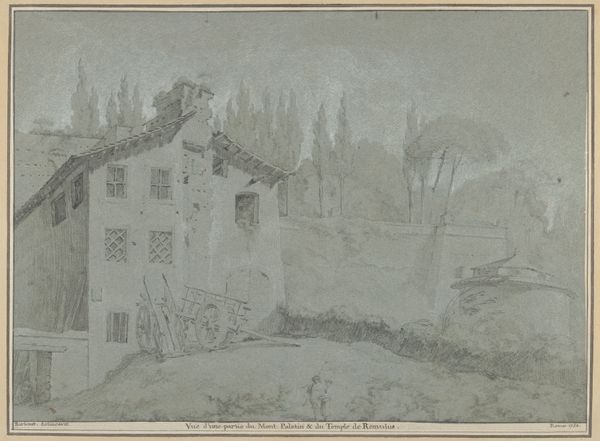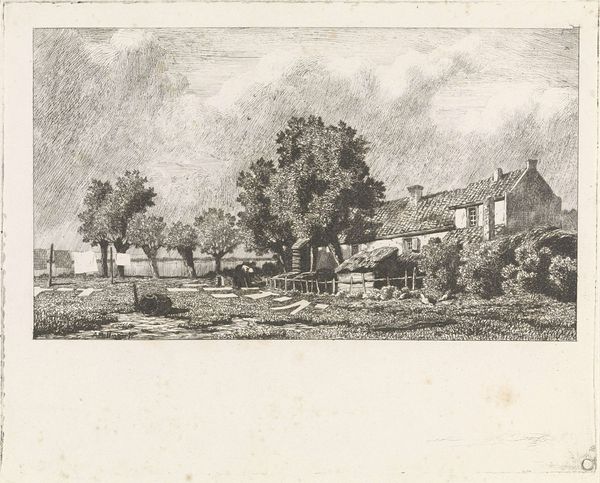
drawing, paper, ink
#
drawing
#
landscape
#
paper
#
ink
#
cityscape
#
realism
Dimensions: height 165 mm, width 243 mm
Copyright: Rijks Museum: Open Domain
Paulus Lauters created this vision of a building by the water in pen and ink. At the heart of this seemingly simple waterside architecture lies an archetypal symbol: the archway. Throughout history, the arch has been a potent motif. From ancient Roman aqueducts to Renaissance city gates, it signifies not only structural support, but also transition, passage, and the promise of what lies beyond. In Lauters’ sketch, the archway frames a cascade of water, a torrent that both divides and connects spaces. This motif echoes in myriad contexts – think of triumphal arches celebrating victory, or the arched entrances to sacred spaces, each suggesting a journey or transformation. The arch is a threshold and a container, signifying the cyclical movement from one state to another, a gateway into the unknown, a powerful image engaging our subconscious understanding of boundaries and possibilities. Consider the emotional weight of standing beneath an arch, the sense of anticipation and potential. Even here, in this modest drawing, we see how symbols transcend time, their emotional resonance undiminished by the passing years.
Comments
No comments
Be the first to comment and join the conversation on the ultimate creative platform.

